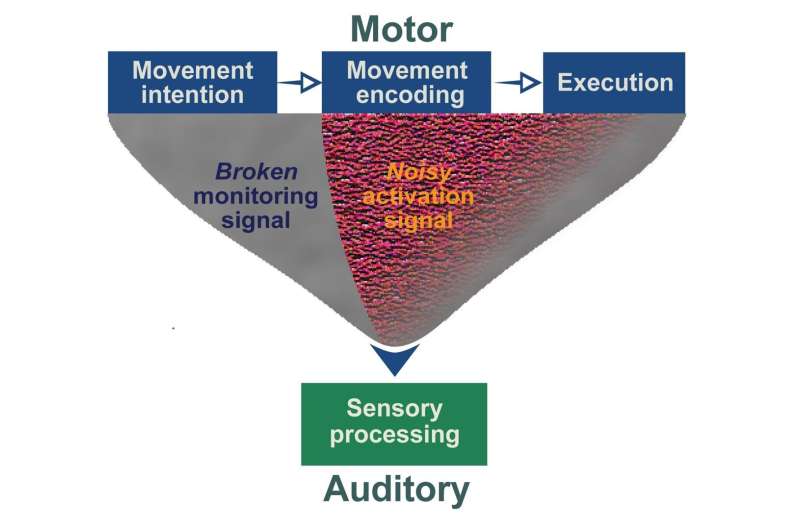A new study published in PLOS Biology has shed light on the underlying brain processes that contribute to auditory hallucinations in individuals with schizophrenia. The research findings suggest that impairments in the motor-to-sensory transformation and the brain’s ‘corollary discharge’ mechanism may be the key factors behind this debilitating symptom. This breakthrough could pave the way for the development of novel treatments targeting these specific neurological processes.

A probe into the Neuroscience of Auditory Hallucinations
Some people with schizophrenia often have auditory hallucinations, such as hearing voices that are not there, which can be stressful and severe. The new research, the team of scientists from China’s New York University Shanghai explains, set out to examine the brain processes at work in these individual differences.
Using electroencephalogram (EEG) experiments, the researchers studied two groups of participants: 20 patients diagnosed with schizophrenia who reported experiencing auditory hallucinations, and 20 same-diagnosis patients who had never experienced them. It also identified two ‘hotspots’ in the brain that are implicated by these new results as prone to dysfunction in those who hear voices.
The “Broken” Corollary Discharge, the Hyperactive Comparator and the “Noisy” Efference Copy
The brain normally sends a corollary discharge before people speak to help suppress auditory regions of the brain so that people can hear other people. This makes possible the separation between internally-generated and external sounds in individuals. The study, however, found that in patients with auditory hallucinations this so-called corollary discharge mechanism breaks down and fails to suppress the internal sounds.
In addition, the researchers discovered that these patients also had an exaggerated ‘efference copy’ response to non-syllabic internal sounds. The efference copy is a neural signal that the brain sends back to itself so it can predict the sensory consequences of its own actions. With auditory hallucinations, this ‘erroneous’ efference copy that results from dysregulation of such a noise-cancelling predictive coding system is exacerbated and the brain hears these internal sounds more than it has to be listening.
Conclusions and Future Directions
The groups of authors in the study suggest that these deficiencies of the motor-to-sensory transformation and the efference copy component are likely to be seminal contributors to the experience of auditory hallucinations in patients with schizophrenia. This landmark discovery brings a host of opportunities for future targeted therapies.
These efforts should enable future interventions that target this specific neurocognitive process to help these patients to more half-way decent distinguish their thoughts from external voices and, hopefully also reducing the distress and impairment experiencing as a result of auditory hallucinations. As research continues to advance, this study provides a critical entry point in science recognizing the diverse neurobiology of this important symptom, ultimately leading the way for improved, individualized treatment.
